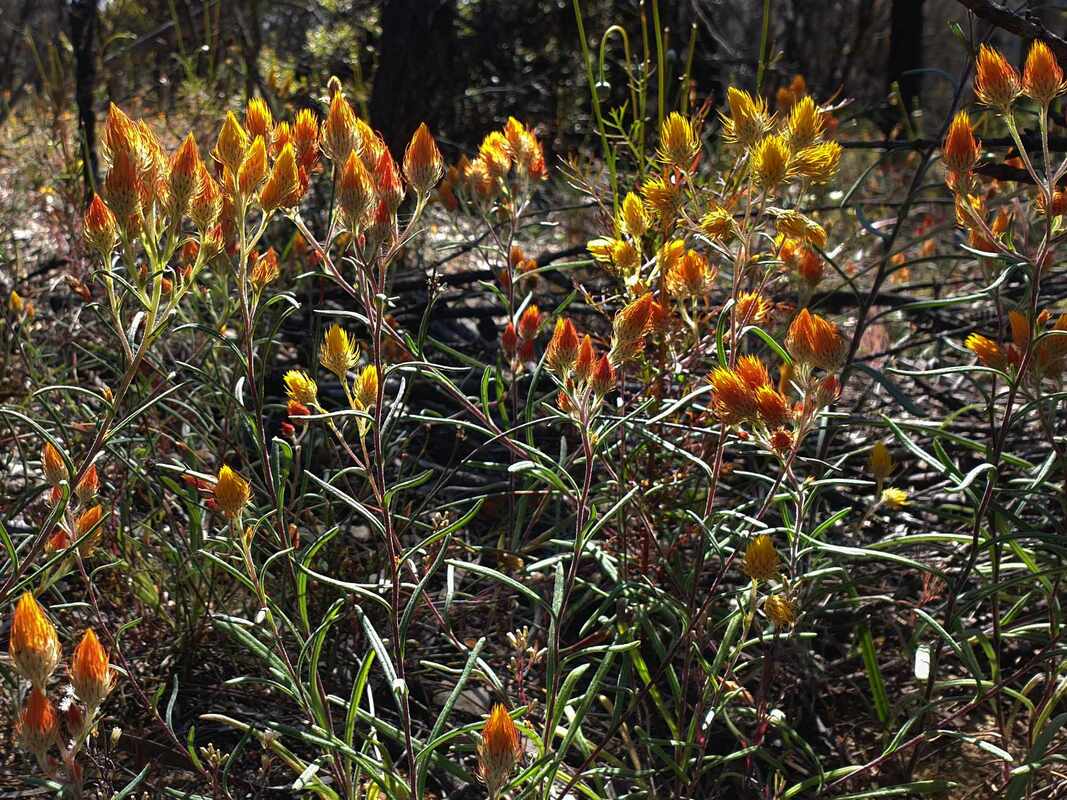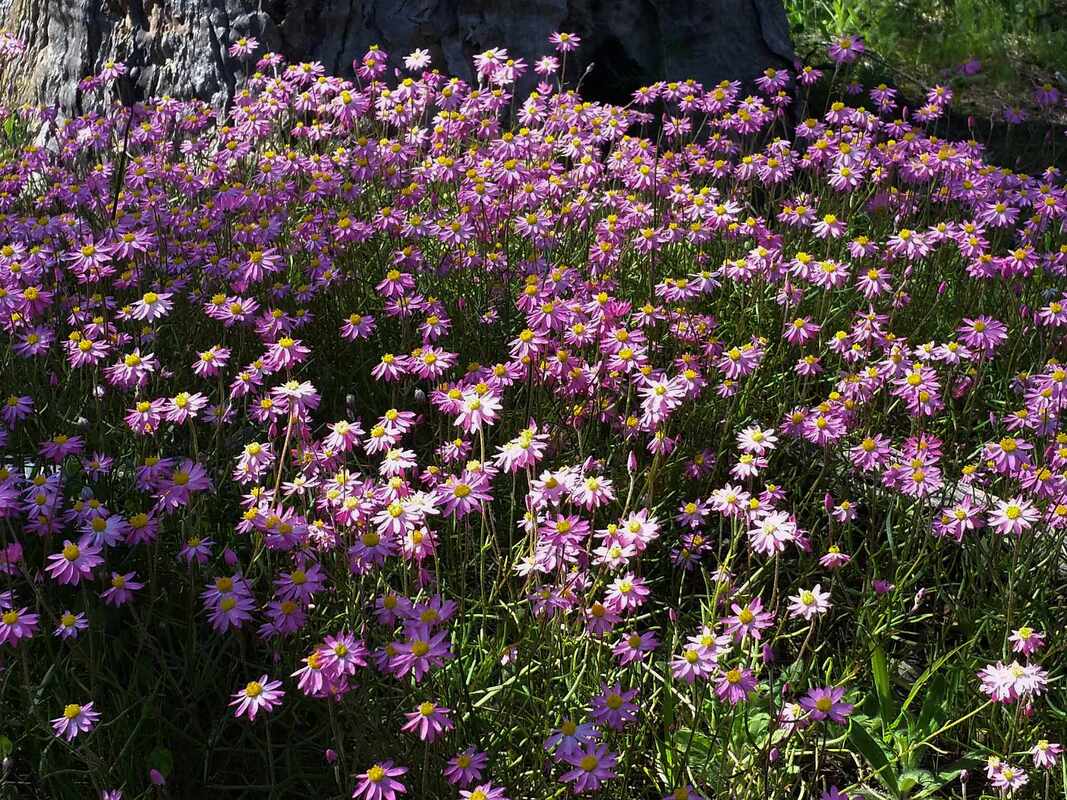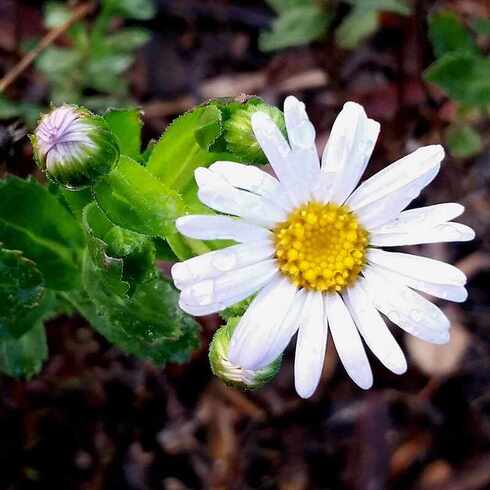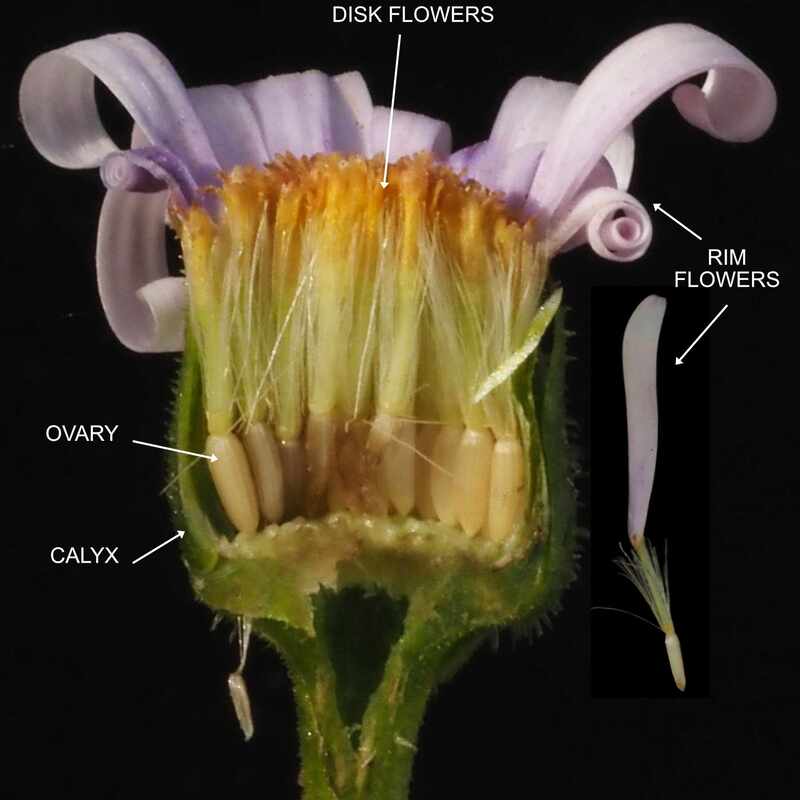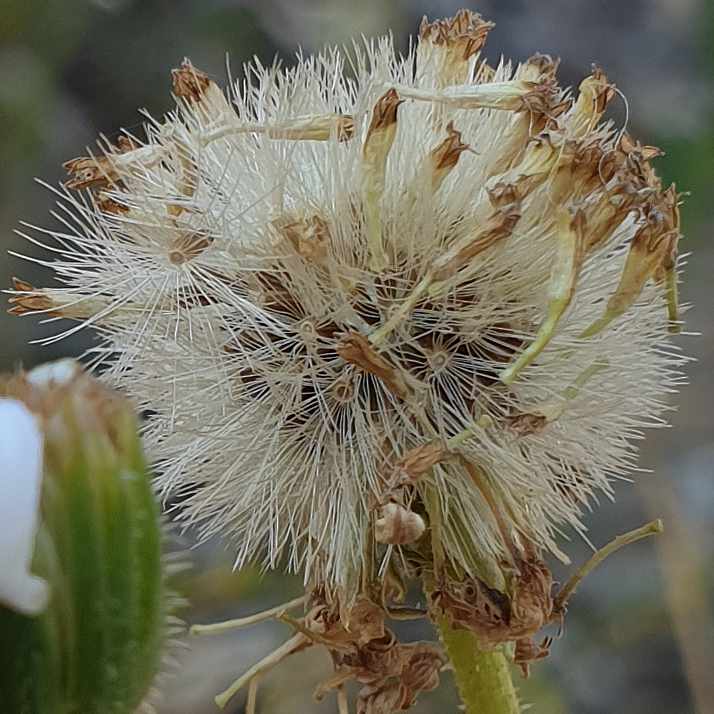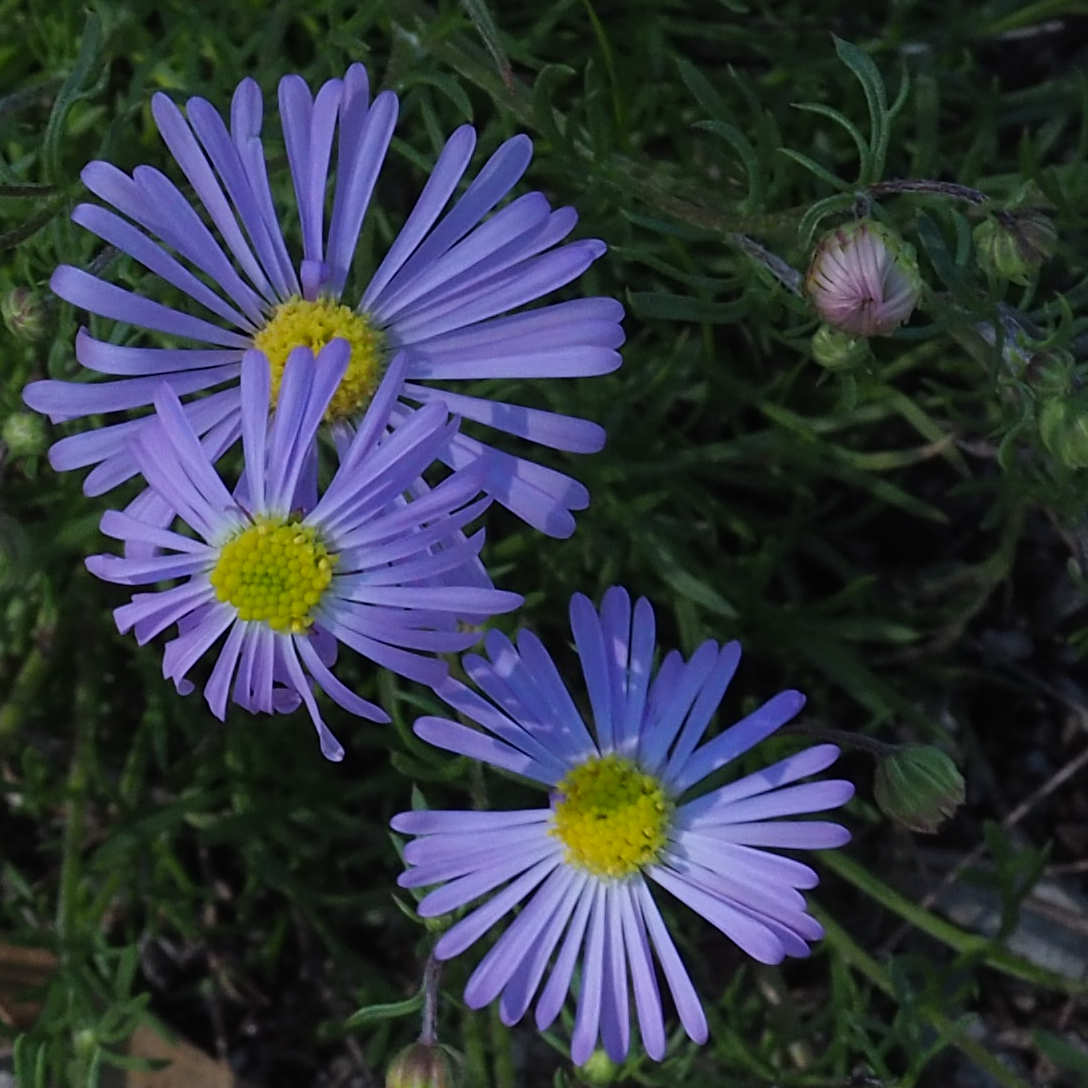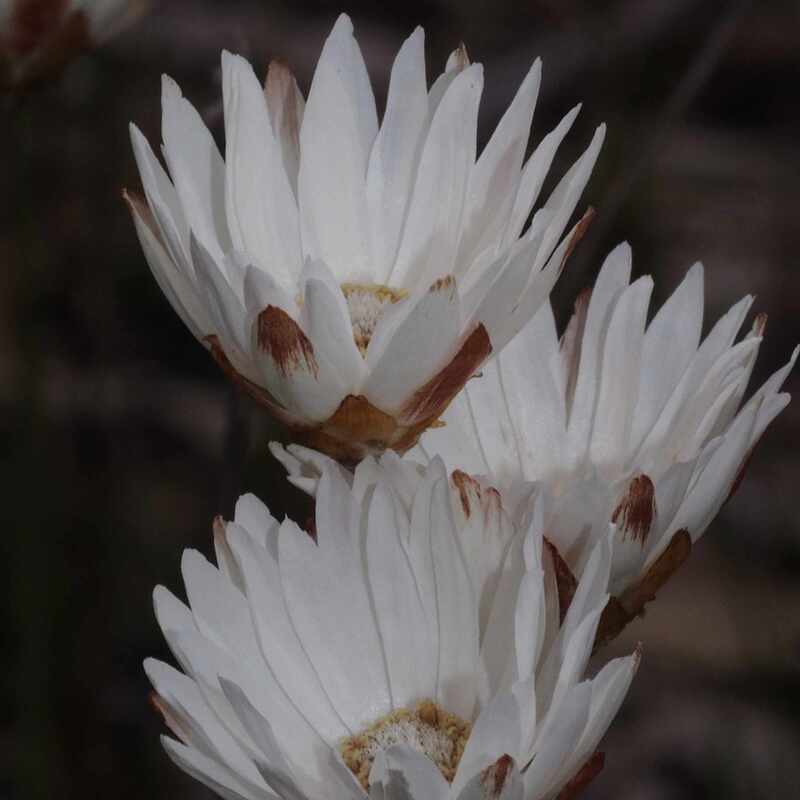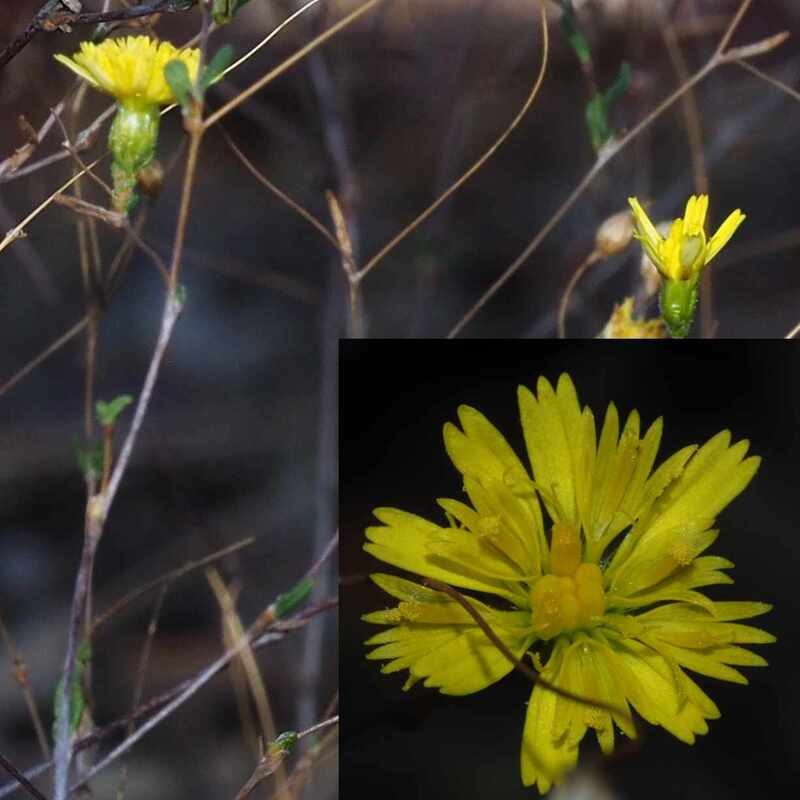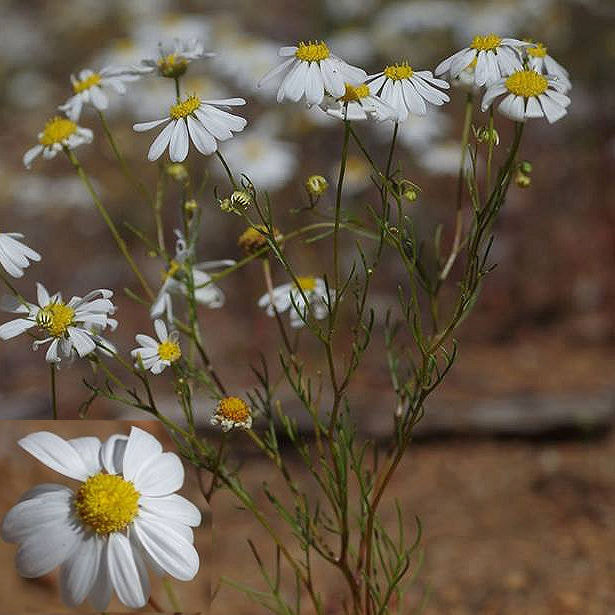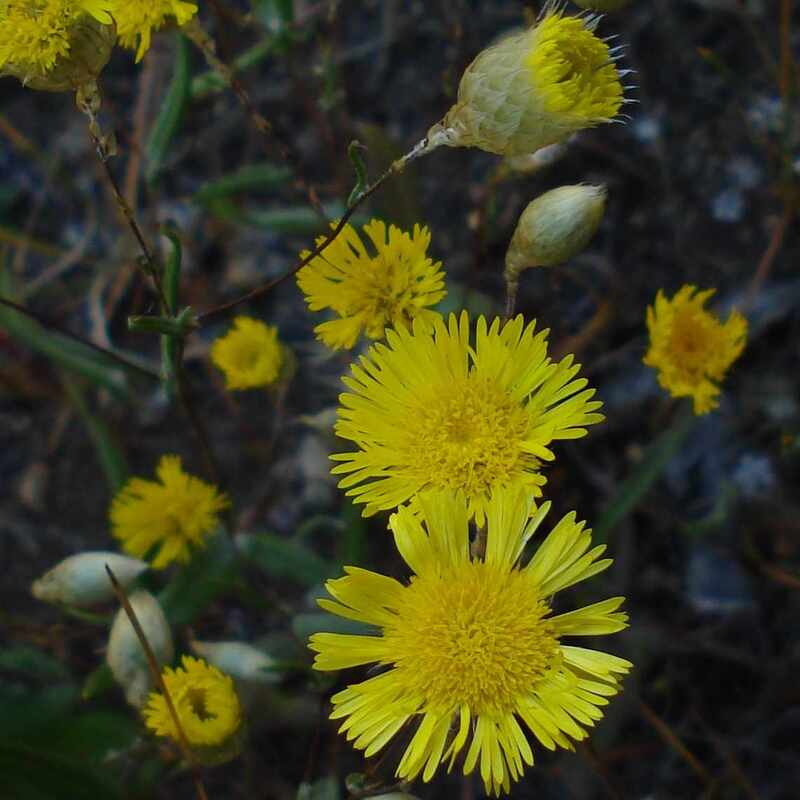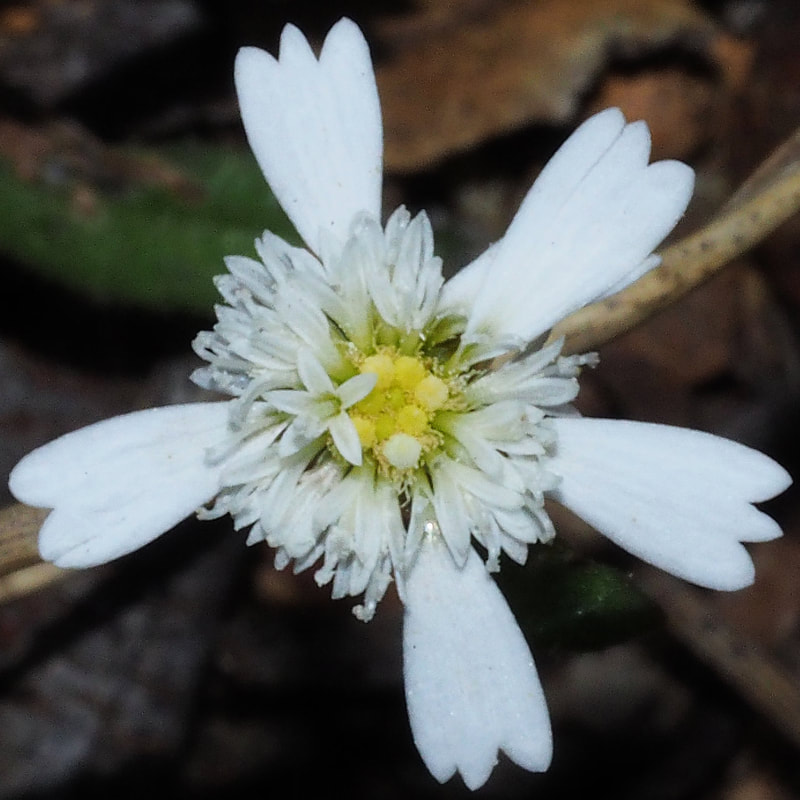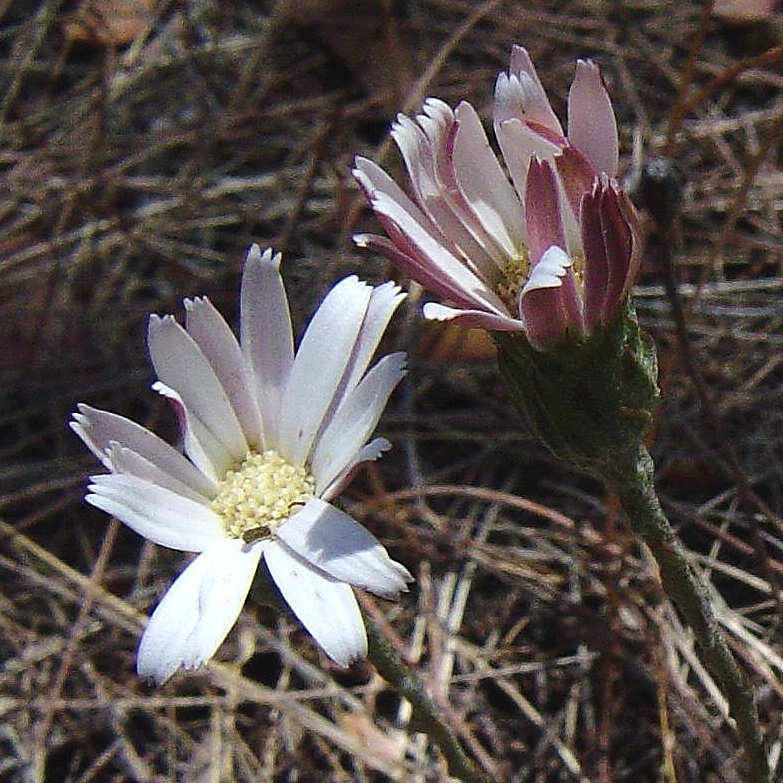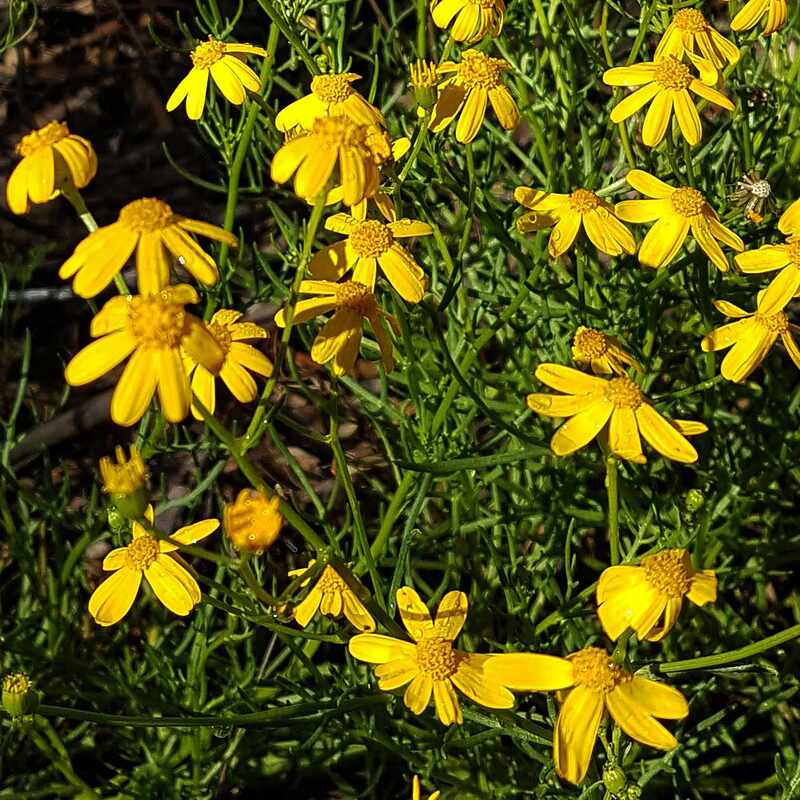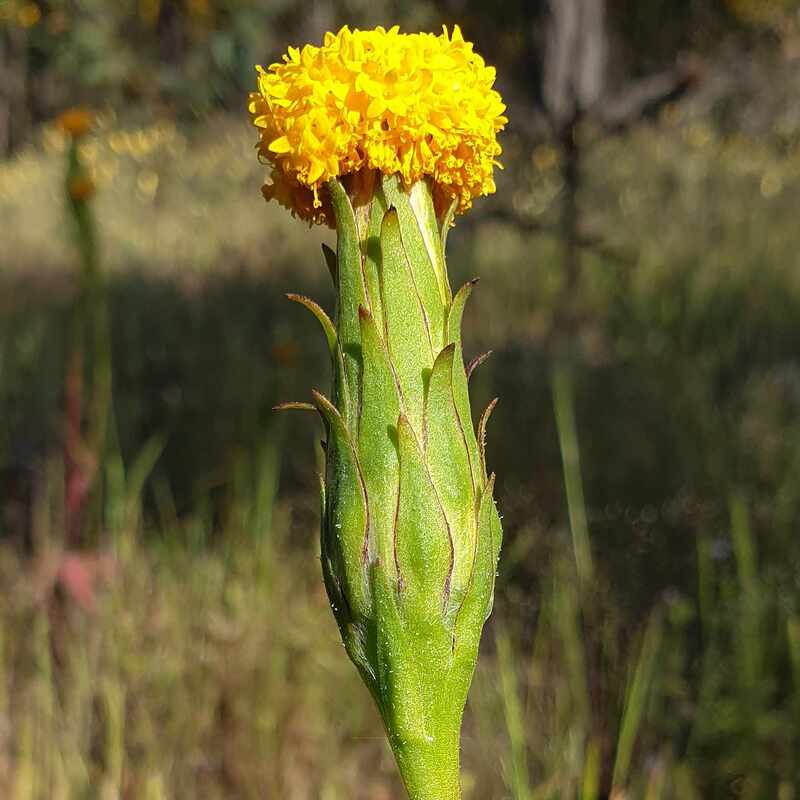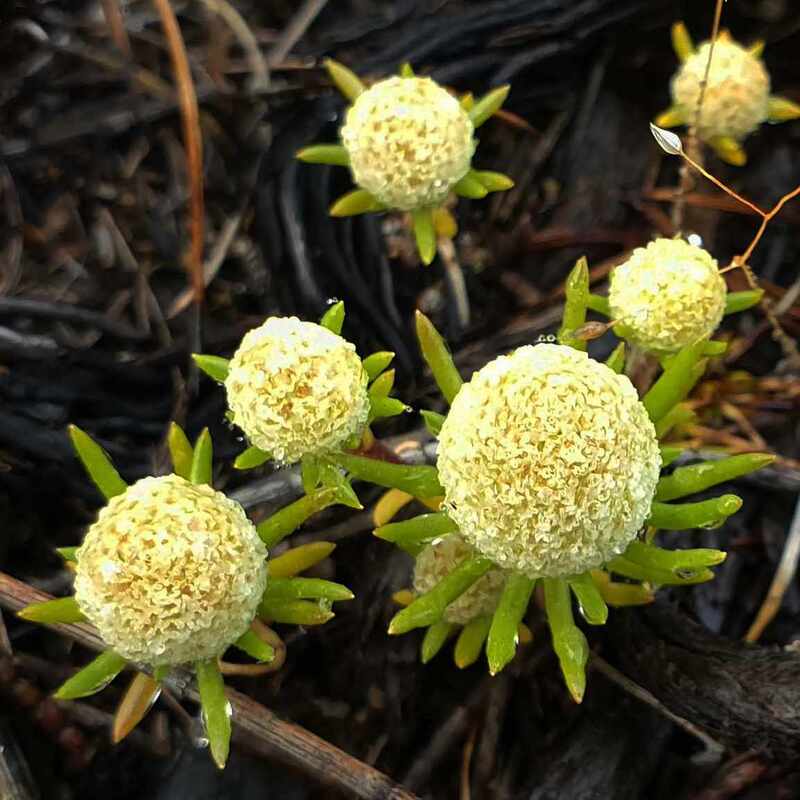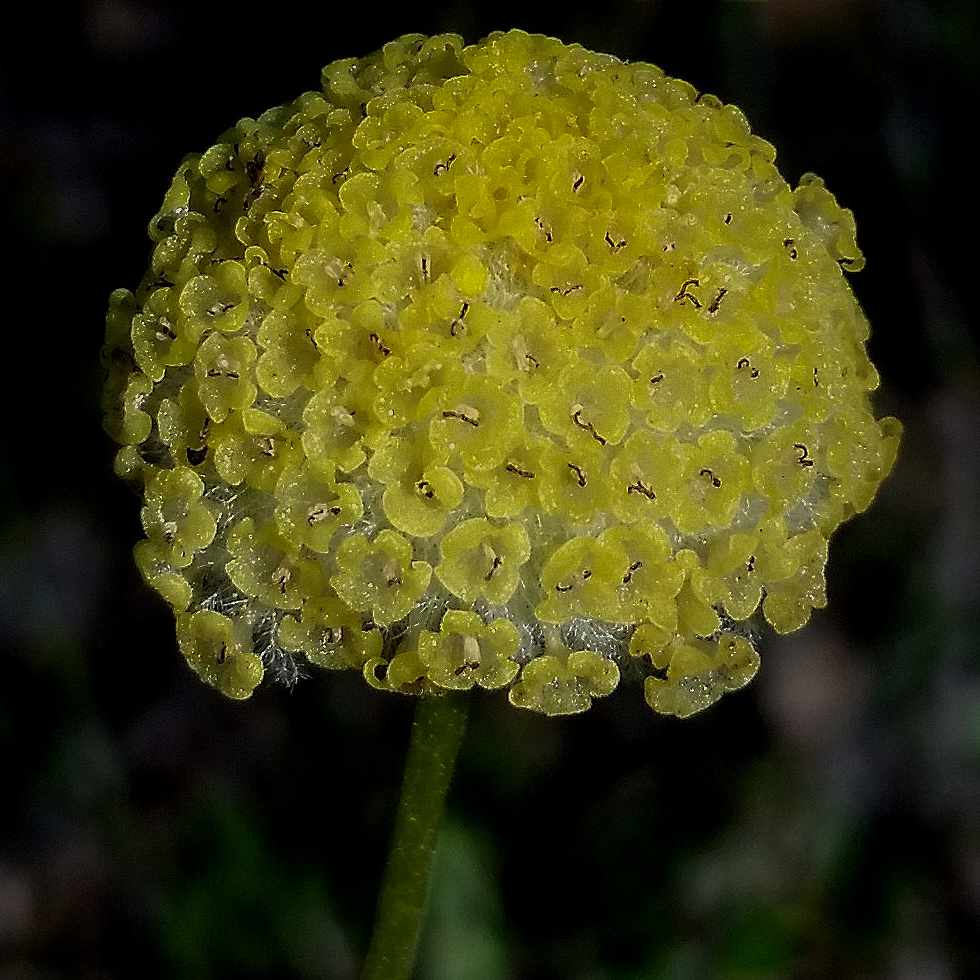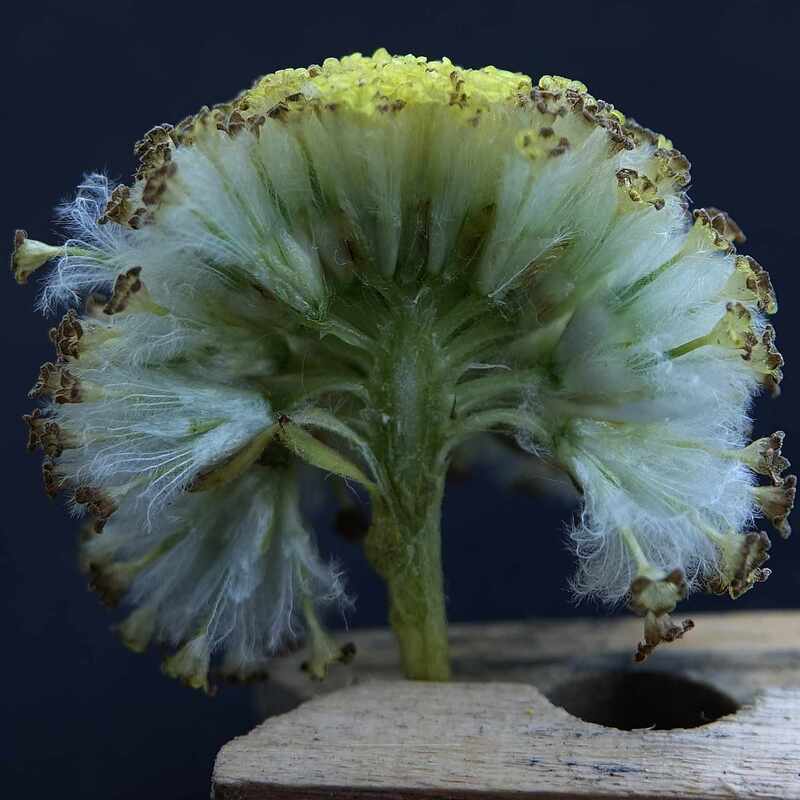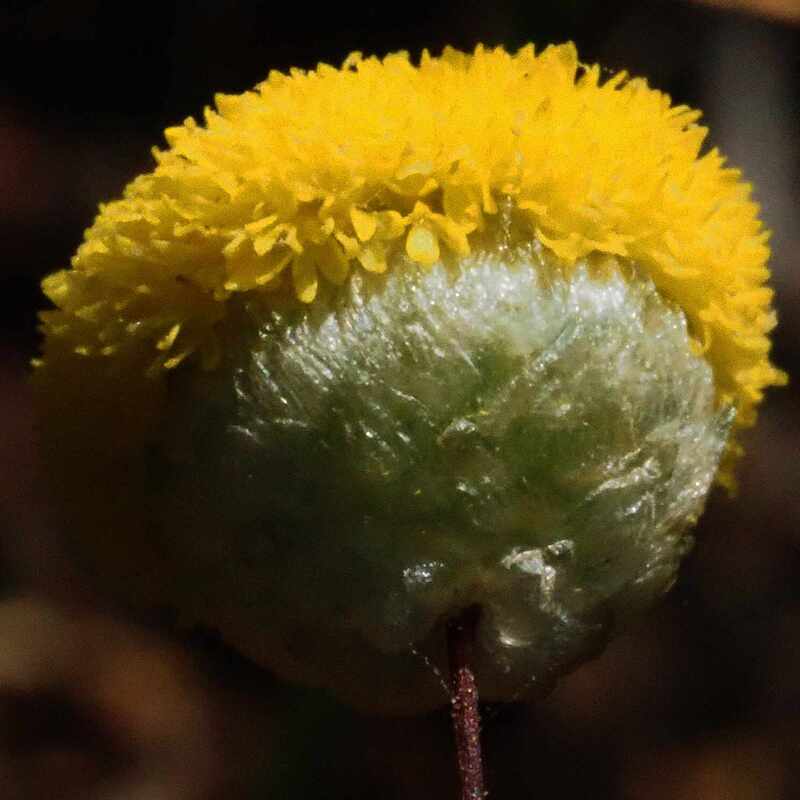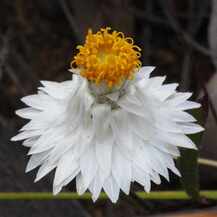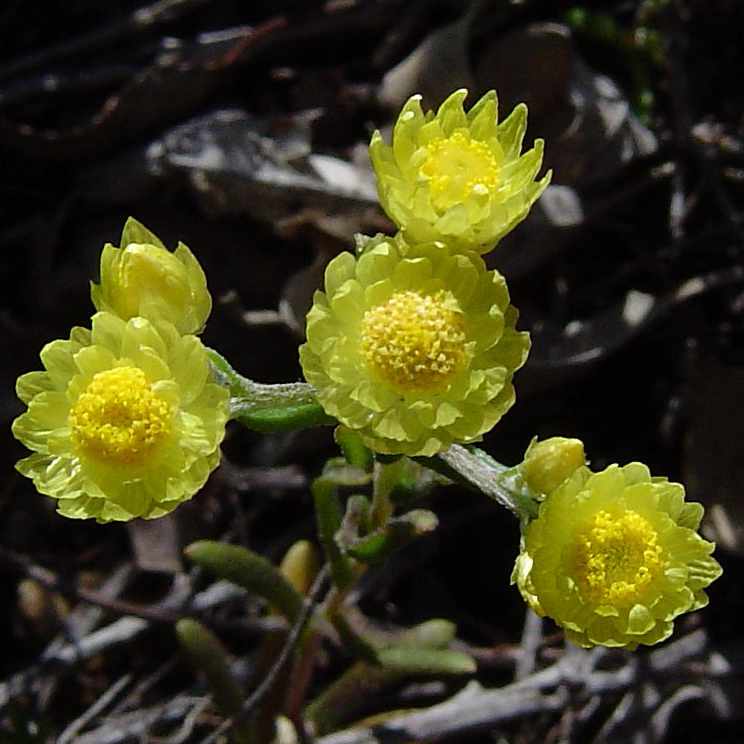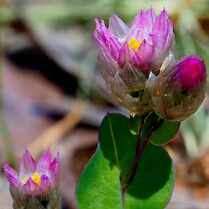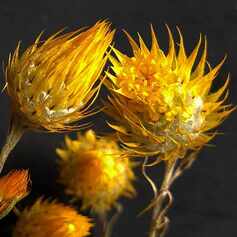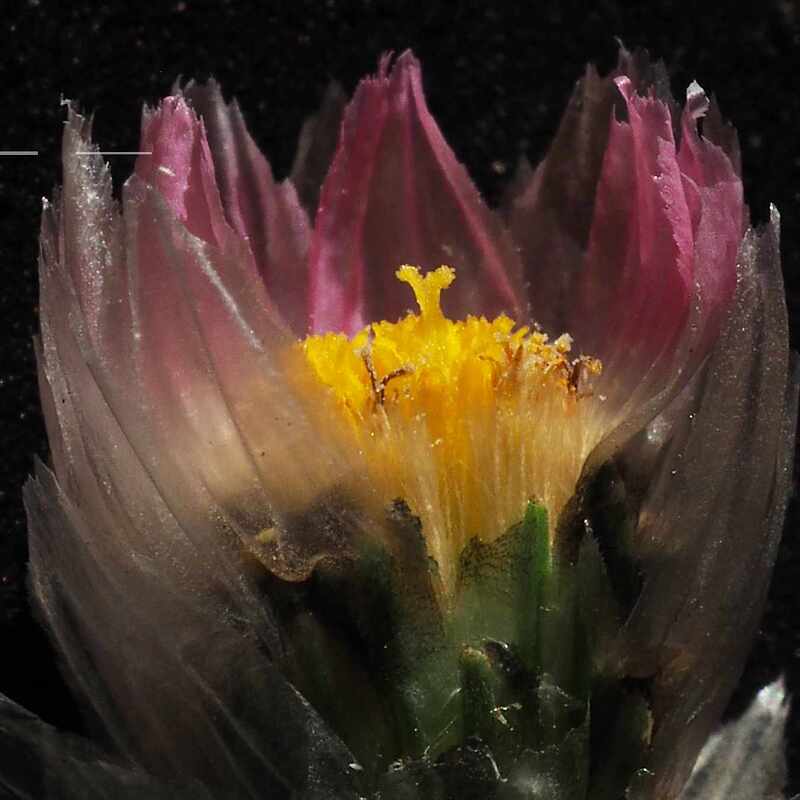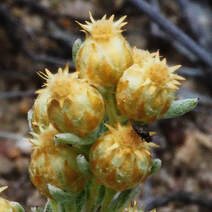Every year, tourists flock north to see mass everlasting displays in the Northern Wheatbelt and pastoral areas.
Narrogin district has many of these wildflowers, which belong to the Asteraceae (daisy) family, also known as Compositae. Patches of colourful spring everlastings occur in most years, particularly in wandoo-sheoak woodland, and in wet areas.
Flowers in this family share the following characteristics:
Deceptive flowers occur as a group on a single stem, which looks like a single large flower.
Think of a sunflower head, which comprises a cup-shaped calyx of scale-like leaves (bracts) enclosing numerous tiny flowers. Flower petals are fused into a tube (corolla) with tiny triangular ends. These are called disk flowers. Often the outer row of flowers has a single large petal-like lobe, which extends out so the flowering head resembles a single flower. These are called rim flowers.
Each tiny flower has numerous hairs surrounding the corolla. which enable the dry seeds to blow away easily.
1. Rim flower species in the Narrogin district. There are also several weed species, which are not shown.
2. Disk flowers only forming a button-shaped head.
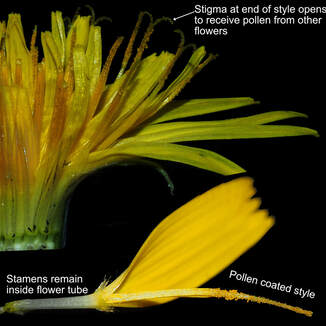 Pollen is presented to insects by a female flower part of the flower
Pollen is presented to insects by a female flower part of the flower
Stamens remain in the base of each flower with the pollen bearing anthers facing the style in the centre. As the plant develops, the style pushes up and collects pollen, which sticks on hairs below the end (stigma). Pollen remains viable on the style for up to a week, after which it dies. Stigma lobes at the end of the style then open out to expose the active female surface to be fertilised by pollen from other flowers
Individual flowers produce a drop of nectar at their base. They don't all mature at once, but start on the outside and mature inwards often in a spiral fashion. This induces insects to repeatedly visit the flowering head and visit each flower as it changes from pollen presentation to the pollen receiving phase.
